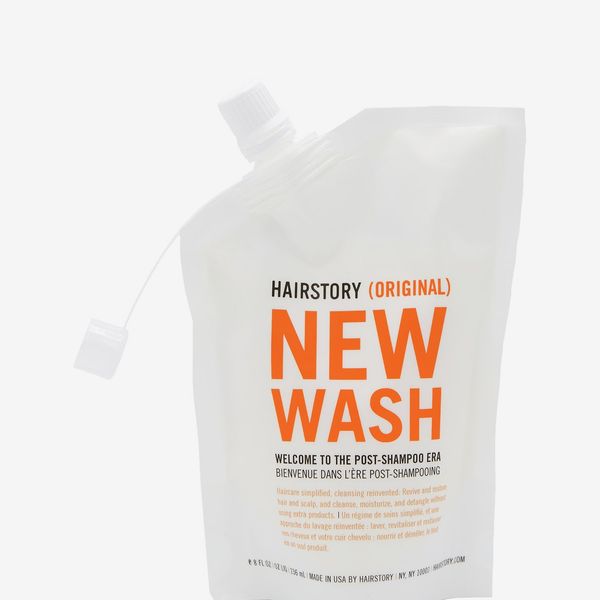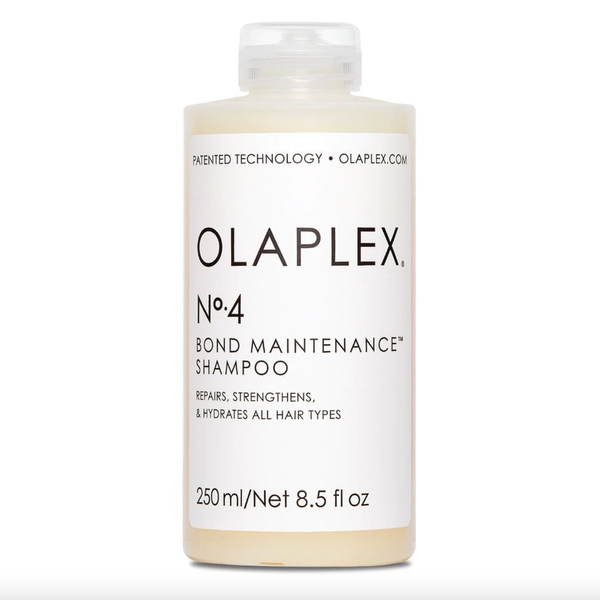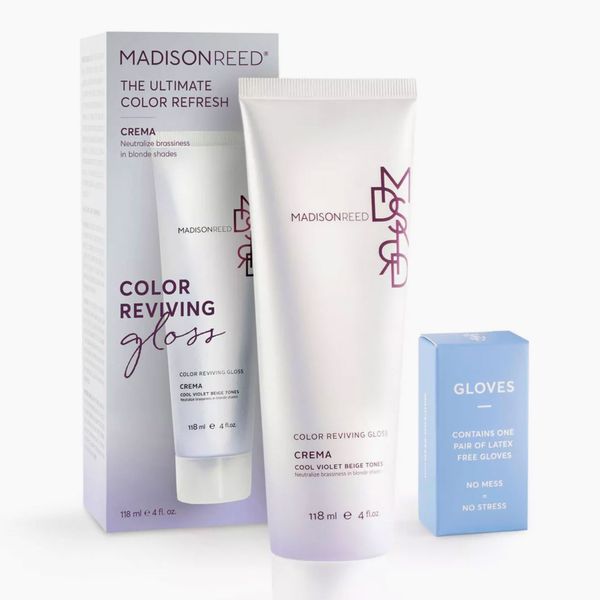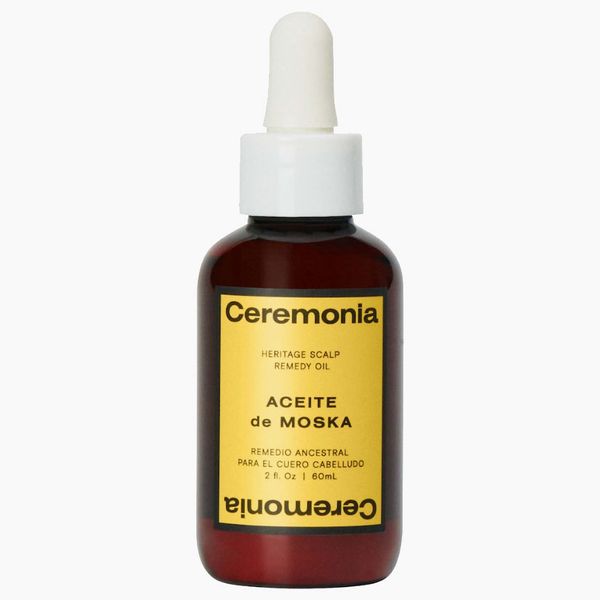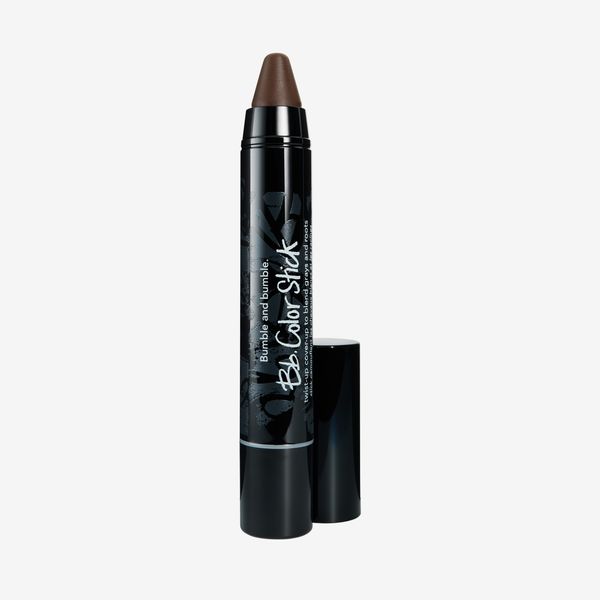
For more of the Cut’s favorite fashion, beauty, and home finds, sign up for the weekly Cut Shop Newsletter.
If the pandemic taught us anything, it’s how to handle our beauty issues on our own. We cut our own bangs, did our own trims, and also learned how to quickly camouflage our natural hair color. While experimenting with at-home box color can be tricky, temporary root-color products are goofproof and easily wash out. Even though salons are open once again and you’re now able to visit your beloved colorist, it never hurts to have an option in between appointments.
We spoke with hair colorists and individuals who dye their hair frequently to learn about how they keep up with their root color between appointments. Whether they stick with having their professional colorists work their magic and manage the in-between with certain shampoos, masks, and glosses, or use at-home root-touch-up products to color themselves, they dished on everything you need to know about root care.
So YOU’RE LOOKING FOR THE BEST Root Touch-up products?
➼ FAQs
➼ The best color-safe shampoos
➼ The best hair glosses
➼ The best masks & scalp-care products
➼ The best products for at-home touch-ups
➼ More tried-and-true options
➼ Our experts
The Best Color-Safe Shampoos
Jessica Wu, co-founder, stylist, and press director of Peter Do, sticks with Clairol Shimmer Lights shampoo and conditioner. The restorative New Wash is ideal for people with curly hair, while the Davines Minu Shampoo is a rich foam that helps preserve color and add volume.
The Best Hair Glosses
“A gloss is a low-commitment hair-color service that gives a subtle sheen of color on top of the hair,” explains Tylor Johnson, hair colorist and founder of Nous Haircare. “They’re made to enrich existing hair color as well as get rid of unwanted tones all while giving an immense amount of shine. If you don’t have color-treated hair, this is a perfect way to try something a little different without the worry of the color permanently changing your hair.”
The Best Masks & Scalp-Care Products
Wu swears by the NatureLab Tokyo Perfect Repair Treatment Mask. “It’s a holy grail product for sure,” she says. “It gives instant moisture and completely hydrates your hair.” Other top-rated options include K18 Leave-In Molecular Repair Mask and Ceremony Aceite de Moska.
The Best Products for At-Home Touch-ups
Florist Ryan Norville has been dyeing her hair for over ten years and using the Pravana Vivids pastel shade range to touch up her roots for the last five years. “This doesn’t cover up growth in new roots, but it helps tint and refresh the rest of your hair without using bleach,” she explains.
If you want a quick fix, Casanova also recommends opting for powder and spray products, like Oribe’s Airbrush Root Touch-Up Spray and Color Wow’s powder.
.
More Tried-and-True Options
At about the size of a compact, this touch-up powder is a great on-the-go option. Along with the near perfect color match, reviewers love how long-lasting and natural the powder looks. But those with sensitive noses, beware — it does have fragrance.
Too much exposure to the sun can significantly change your hair color. With the help of sunflower extract, this shampoo provides UV protection that preserves your color. Bonus: If you’re a sucker for a good scent, the blend of bergamot, orange, and apple will be a delight to use in the shower.
If you’ve got a party to go to and no time to make it to the salon, this magic spray will be your savior. It’s a temporary hair spray that works on all textures and will camouflage your roots in a flash. It’s also super-easy to wash out in the shower.
For quick, easy, and affordable touch-ups, this is your best bet. The temporary color sprays on and stays put until your next wash. Some reviewers refer to the affordable spray as a “salon in a bottle.”
L’Oréal’s Magic Root Concealer now comes in a clickable pen, but for the moment it’s only available in brown and black. Don’t pull the rookie move of impatiently overclicking to activate this — a little goes a long way, and users have noted that too much can result in hardened hair. Users do appreciate how its compact size fits perfectly in a purse’s side pocket.
The nozzle attachment of this spray helps with aim precision and dries quickly. Staying put between shampoos but easily washing out.
With a lineup that includes a shade for redheads (often overlooked), this formula is made of mineral-derived pigments and moisturizing amino acids. Its texture is lightweight without being sticky, and a little goes a long way.
This spray has a dual-action nozzle for the most targeted coverage, so you can get right into those roots. Coming in up to six shades for your ideal match, this is a favorite for darker hair colors and thinner hair.
Kind of like Clinique’s Chubby Stick, this easy-to-hold tapered-tip pencil, which comes in five shades, gets a lot of praise from reviewers for its covering ability. It makes covering your roots as easy as coloring inside the lines.
This flat, wide marker might not be the most high-tech of cover-ups, but all eight of its shades are available on Amazon. It includes a little comb for more precise application along the hairline, where you’d rather not get any ink on your skin.
.
FAQs
How long should you go without a root touch-up?
The “grown out roots look” can work for some people. However, if that’s not a beauty trend you want to willingly partake in, NYC-based colorist Olivia Casanova recommends you reach out for an at-home kit that best suits your needs and retouch your roots every three to ten weeks. If your colorist uses a demi-permanent on your hair, though, Casanova suggests waiting it out until your next salon appointment since most at-home root touch-ups are permanent color and can mess up your desired color. Patience is key, people!
What products should you use to take care of your roots?
An important step between touch-ups is maintaining your scalp and hair health. Some of the best products for doing so? Color-safe shampoos and conditioners that won’t strip it from your hair. Casanova swears by Davines Minu shampoo and conditioner. “Depending on your hair type and texture, I tell my clients not to wash more than one to three times a week. Avoiding hot water when washing your hair also makes a world of a difference,” she says.
Creative director and writer Mi-Anne Chan, who has dyed her hair for over four years, swears by the Hairstory’s New Wash. “This is the only shampoo I use,” says Chan. “I like it because it actually makes my hair feel clean while not pulling out any of my color.”
How do you touch up roots on highlighted hair?
If you’re going to play hairstylist at home, it’s important to use a product that is going to keep your color looking healthy and vibrant. Celebrity colorist and L’Oréal professional ambassador Adina Pignatare always suggests keeping the L’Oréal Professionnel Metal Detox System in your hair cabinet. “I recommend this to my clients to extend the longevity of their color and protect against hard metals, which cause color oxidation and breakage,” says Pignatare. And the most important thing is consistency. “If your colorist had a specific foil pattern, it will be important to continue with this pattern to avoid overlapping,” she recommends, adding that open air is less aggressive so you can still refresh dull, blonde ends by keeping strands out of foils.
Wait, so do hair glosses actually work?
Hair glosses are one of the lesser-known hair treatments out there, but shouldn’t be — because, yes, they do actually work. They provide a nice shine and help boost existing color, so they’re perfect for people who have dyed their hair (and even those who haven’t). Unlike typical root-touch-up options, glosses won’t completely cover gray hair because they don’t contain ammonia. They will, however, help grays blend in better with the rest of your color. Best put by Shvonne Perkins, a master colorist at Madison Reed: “A gloss lets you flirt with something new without a total commitment.”
But is the process different for touching up gray hair?
For covering up gray hairs, Pignatare suggests a “low and slow” method, pointing out that the biggest difference between touching up grays is the processing time, which can differ whether you are blonde or brunette. In other words, you cannot rush the process. And when you’re in the salon, your stylist could use a few different methods. “The first method is feathering down the color versus creating a straight line, which can have a more lived-in look and has less maintenance,” says Pignatare. But don’t forget to flip the foils over to touch up the roots in between.
.
Our Experts:
- Olivia Casanova, NYC-based colorist
- Mi-Anne Chan, creative director and writer
- Shvonne Perkins, master colorist at Madison Reed
- Jessica Wu, co-founder, stylist, and press director of Peter Do
- Tylor Johnson, founder / hair colorist of Nous Haircare



